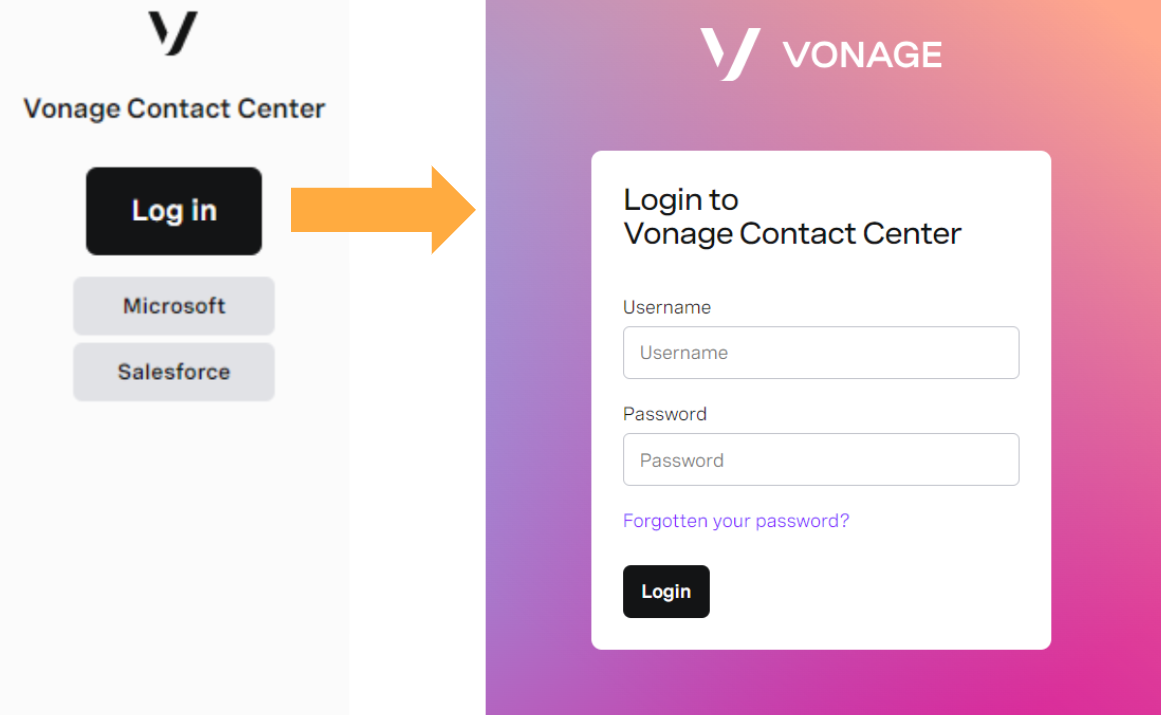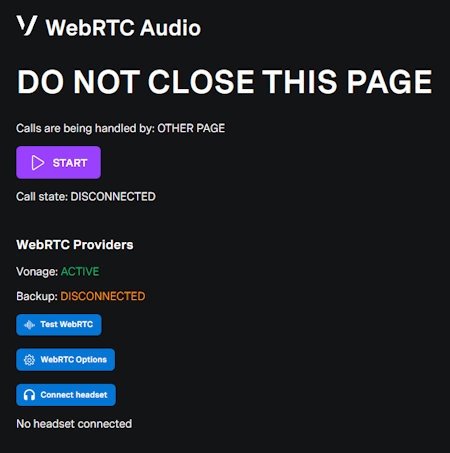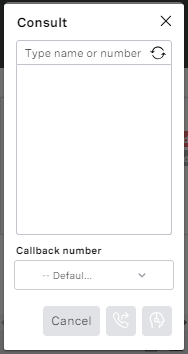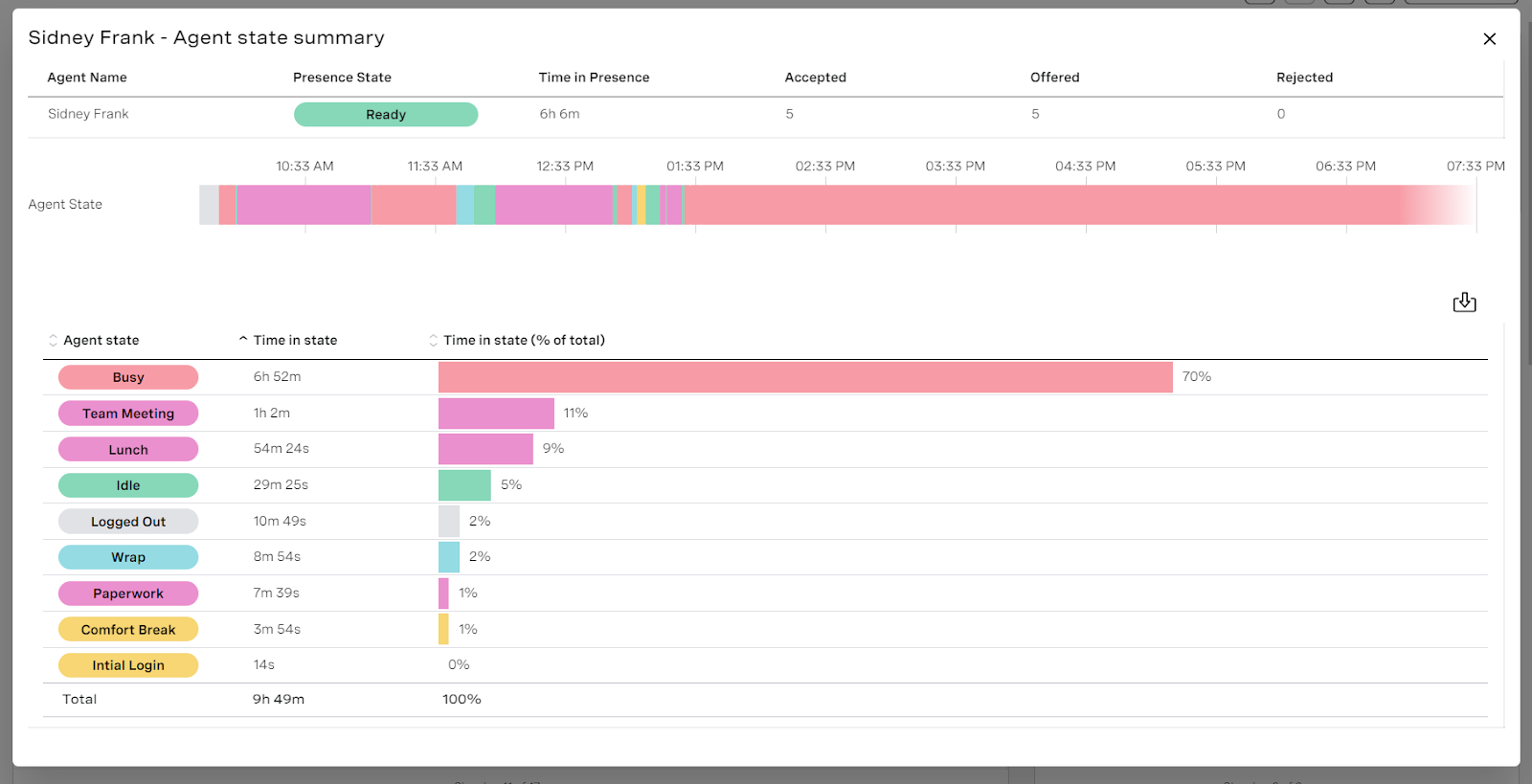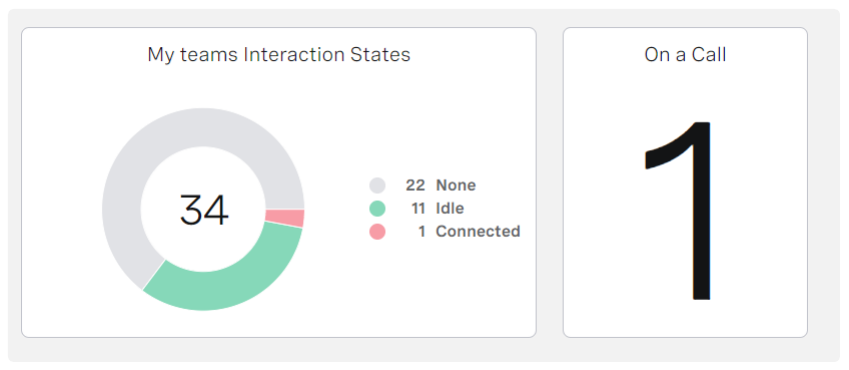Recently released in Q2 '24
| In this page |
|---|
![]() Platform-wide feature
Platform-wide feature
![]() Paid-for feature
Paid-for feature
![]() Enhancement to paid-for feature
Enhancement to paid-for feature
Important updates
TLS cipher changes
As part of our ongoing commitment to security and performance, Vonage is announcing an important update to its Transport Layer Security (TLS) cipher suite, effective from June 3, 2024. This update will remove vulnerable ciphers and extend our support to a modern set of ciphers. The changes are designed to enhance the security of data in transit and ensure compliance with the latest industry standards.
Certain older ciphers that are no longer considered secure have been removed from our supported list. This is to prevent potential vulnerabilities and ensure that all data transmissions meet the highest security standards. We have also expanded our support to include a new set of modern, secure ciphers. These ciphers provide stronger encryption and improved performance, ensuring that your data remains secure during transmission.
The table below details the ciphers that have been removed and the new ciphers that we now support:
| TLS Cipher | Support |
|---|---|
ECDHE-ECDSA-AES128-GCM-SHA256 | Support continued |
| ECDHE-RSA-AES128-GCM-SHA256 | Support continued |
| ECDHE-ECDSA-AES128-SHA256 | Retired |
ECDHE-RSA-AES128-SHA256 | Retired |
| ECDHE-ECDSA-AES256-GCM-SHA384 | Support continued |
| ECDHE-RSA-AES256-GCM-SHA384 | Support continued |
| ECDHE-ECDSA-AES256-SHA384 | Retired |
| ECDHE-RSA-AES256-SHA384 | Retired |
| AES128-GCM-SHA256 | Retired |
| AES128-SHA256 | Retired |
| AES256-GCM-SHA384 | Retired |
| AES256-SHA256 | Retired |
| TLS_AES_128_GCM_SHA256 | Added |
| TLS_AES_256_GCM_SHA384 | Added |
| TLS_CHACHA20_POLY1305_SHA256 | Added |
Customers are required to review and update their infrastructure to ensure compatibility with the new cipher suite.
Third party cookies no longer in Chrome
Google is planning to phase out third-party cookies from Google Chrome completely by the middle of 2024. Historically, Vonage Premier for Service Cloud Voice has relied on third-party cookies to integrate with Salesforce. Vonage has now removed our need for third-party cookies whilst retaining existing business functionality. No impact is expected to current users. The only difference an existing user of Service Cloud Voice might see is the need to log in to Vonage within the Salesforce user interface.
To ensure that your business is not impacted by Google's phasing out of third-party cookies, Vonage recommends upgrading to our latest Salesforce packages. These package versions are at the end of these release notes — see Salesforce package deprecation and retirement at the end of this page.
General Availability Features
Vonage Premier for Service Cloud Voice 
Salesforce Einstein Conversation Insights integration
| VCC Priority | VCC Express | VCC bundled w/VBC Express | VCC Essentials | VCC bundled w/VBC Elevate | VCC Select | VCC Premium | Service Cloud Voice |
|---|---|---|---|---|---|---|---|
|
Salesforce’s Einstein Conversation Insights is a feature available for sales and service users that offers the ability to see insights and trends surfaced from voice calls. In Q2 2024 we integrated Vonage Premier for Service Cloud Voice with Salesforce’s Einstein Conversation Insights.
Calls are recorded within Vonage Contact Center and are then pulled into the Salesforce platform using this integration. The calls are then analyzed for mentions of specific keywords, phrases, and points of interest. Reps and managers can review the call transcript, or see areas that need attention or follow-ups.
Enforced manual disposition codes
| VCC Priority | VCC Express | VCC bundled w/VBC Express | VCC Essentials | VCC bundled w/VBC Elevate | VCC Select | VCC Premium | Service Cloud Voice |
|---|---|---|---|---|---|---|---|
|
In Q2 2024, we introduced enforced manual disposition codes for Vonage Premier for Service Cloud Voice. With this feature, you can ensure that agents always provide a disposition code for an interaction. The feature prevents Vonage Contact Center from assigning the next interaction to an agent until the agent has provided a code for their previous interaction. The disposition code is filled in as part of the standard Salesforce voice call record.
Salesforce Open CTI
Open case statuses supported 
| VCC Priority | VCC Express | VCC bundled w/VBC Express | VCC Essentials | VCC bundled w/VBC Elevate | VCC Select | VCC Premium | Service Cloud Voice |
|---|---|---|---|---|---|---|---|
|
|
|
Previously in the external routing configuration, the ‘Status after VCC release’ and ‘Statuses initiating VCC release’ options showed only closed case-status values. This meant that if an agent working on a case wanted to release the interaction from VCC, the case status would be set to a closed status, which would close the case.
We have now extended the functionality to show open case statuses as well, giving more flexibility to supervisors and admins. This means that case status can be set to an open status, enabling the agent to be released from the interaction without closing the case.
ContactPad
Updated login for embedded ContactPad 
| VCC Priority | VCC Express | VCC bundled w/VBC Express | VCC Essentials | VCC bundled w/VBC Elevate | VCC Select | VCC Premium | Service Cloud Voice |
|---|---|---|---|---|---|---|---|
|
|
|
|
|
|
Vonage has introduced a new login process for ContactPad embedded within iFrames. This update aligns with changes in web privacy, including the phasing out of third-party cookies by browsers like Google Chrome.
Key changes:
- Single login button: Users will see a streamlined login interface with a single button and any single sign-on options enabled.
- Pop-out authentication: A separate authentication window will appear when logging in or logging out.
- Pop-up permissions: Users must enable pop-ups for Vonage on their first logout, allowing Vonage to end all sessions.
To allow users more time to prepare, we have delayed the go-live date from May 6, 2024, to May 28, 2024.
This change will go live on May 27, 2024. Effective immediately, customers can opt into this change ahead of time, allowing for a scheduled rollout. To opt in, please get in touch with your Customer Success Manager or Account Manager. Once enabled, follow this guide on How to adopt the new login flow early.
This change is part of our ongoing commitment to user security and privacy, adapting to the latest web standards. For any queries or feedback, please reach out to Vonage support.
Administration
Skill levels available as default 
| VCC Priority | VCC Express | VCC bundled w/VBC Express | VCC Essentials | VCC bundled w/VBC Elevate | VCC Select | VCC Premium | Service Cloud Voice |
|---|---|---|---|---|---|---|---|
|
|
|
|
|
|
|
Many users already make use of skill levels, but they were not previously available to all. Skill levels are now enabled for all users by default.
Without skill levels, when VCC routes an interaction that requires a specific skill, any agent with the skill can handle it. However, VCC might have assigned the interaction to an agent with limited knowledge or experience in the skill or to an expert.
After enabling skill levels, a skill can be assigned to an agent with a level from 1 through 10. A level of 1 indicates a low skill level, while 10 is the highest level of skill an agent can have. VCC assigns interactions to the available agent based on the interaction’s mandatory and optional skills and selects the highest-skilled agent from that pool. This feature prioritizes a better customer experience by favoring higher-skilled agents over lesser ones; in addition, it allows lesser-skilled agents to act as backups during times of increased demand.
By default, skills added are configured with skill level of 5. If you don’t want to use skill levels in your account, leave all skills with a level of 5.
WebRTC
Vonage enhanced noise cancellation 
| VCC Priority | VCC Express | VCC bundled w/VBC Express | VCC Essentials | VCC bundled w/VBC Elevate | VCC Select | VCC Premium | Service Cloud Voice |
|---|---|---|---|---|---|---|---|
|
|
|
|
Background noise is a significant issue for the contact center. This can be noise around agents (for example, fans, air conditioning, and — for home workers — pets and children), voices of other people in the background (for example, other agents in a densely packed office), and even background noise around the consumer. Background noise reduces the agent and consumer experience by causing frustration and requiring people to repeat themselves. This can result in longer calls and lower satisfaction.
The Q2 2024 release introduced our new add-on feature, Vonage enhanced noise cancellation. Vonage enhanced noise cancellation is an AI-powered technology that not only reduces agent background noise (similar to a high-end noise canceling headset), it also supports background voice cancellation (BVC) and inbound noise cancellation to remove non-dominant speakers from the agent end of the call and reduce noise from the consumer side. Vonage enhanced noise cancellation goes beyond the basic noise-cancelling features you get in headsets or built into operating systems.
This feature is available to agents using WebRTC and we are pleased to offer a 28-day free trial, after which it is chargeable on a per-user basis. If you would like to trial or purchase Vonage enhanced noise cancellation, please speak to your Account Manager.
Updated WebRTC popout UI/UX 
| VCC Priority | VCC Express | VCC bundled w/VBC Express | VCC Essentials | VCC bundled w/VBC Elevate | VCC Select | VCC Premium | Service Cloud Voice |
|---|---|---|---|---|---|---|---|
|
|
|
|
VCC makes use of a browser popout — a separate page independent of VCC and the CRM which can be opened in a separate browser tab or instance. The popout improves the reliability of WebRTC connections and enables features like headset controls and VDI support.
As part of the Q2 '24 release, this popout has been updated with a simplified and cleaned-up user interface.
| Original popout | Updated popout |
|---|---|
Telco
Select the caller identity (CLID) for external consults/transfers 
| VCC Priority | VCC Express | VCC bundled w/VBC Express | VCC Essentials | VCC bundled w/VBC Elevate | VCC Select | VCC Premium | Service Cloud Voice |
|---|---|---|---|---|---|---|---|
|
|
|
|
|
|
In VCC agents can choose the number to present when they make outbound calls. This capability improves outbound call delivery by making a call appear local to the recipient and by allowing the agent to select a callback number that will work in locales where there are callback number restrictions; for example, in some countries calls with certain types of callback numbers or non-local callback numbers may be blocked.
From Q2 '24 onwards, VCC agents can do the same thing for external consults and transfers. When making an external consult or transfer, the agent now has the option of selecting a specific callback number to use, provided additional callback numbers have been configured for the account and agent. This change can improve the delivery rate for external consults and transfers in some locales.
By default, external consults and transfers will continue to use the callback number specified in the interaction plan configuration — this was the behavior before the Q2 '24 release.
Insights
New default dashboards in Historical Analytics 
| VCC Priority | VCC Express | VCC bundled w/VBC Express | VCC Essentials | VCC bundled w/VBC Elevate | VCC Select | VCC Premium | Service Cloud Voice |
|---|---|---|---|---|---|---|---|
|
|
|
|
|
|
The default Analytics dashboards answer the most common questions that arise when running a contact center. They help you monitor and analyze trends and performance in your contact center.
We have recently added several more default dashboards and made a few enhancements to existing ones. New default dashboards contain dedicated reports such as audio problems summary, interaction monitoring, and the outbound interactions summary. In addition, we extended the Interaction details dashboard with information about disposition codes and the disconnection order.
Team Monitoring — filter sets 
| VCC Priority | VCC Express | VCC bundled w/VBC Express | VCC Essentials | VCC bundled w/VBC Elevate | VCC Select | VCC Premium | Service Cloud Voice |
|---|---|---|---|---|---|---|---|
|
|
|
|
|
|
Following the successful launch of the Team Monitoring feature in Q1 2024, we are excited to announce filter sets. Filter sets replace the advanced filters with a more refined and improved user experience when filtering the agents shown. This enhancement allows users to configure their team dashboards with up to 50 unique filter sets, facilitating a customized view of your team.
Filter sets enable dashboard users to dynamically filter by column values and adjust the visibility and order of columns. Users can create filter sets tailored for various monitoring purposes — such as overseeing individual teams, agents with particular skills or groups, or tracking agents who are currently idle — enabling users to efficiently manage large team dashboards without needing to navigate multiple dashboards. Once created, these filter sets are saved with the dashboard, making them accessible to other users.
Team Monitoring — edit skills and groups 
| VCC Priority | VCC Express | VCC bundled w/VBC Express | VCC Essentials | VCC bundled w/VBC Elevate | VCC Select | VCC Premium | Service Cloud Voice |
|---|---|---|---|---|---|---|---|
|
|
|
|
|
|
Building on the momentum of the Team Monitoring feature introduced in Q1 2024, we're excited to announce the ability to manage your team's skills and groups with Team Monitoring.
Admins and supervisors can add or remove skills, adjust skill levels, and modify agent groups directly from the dashboard. This allows for real-time adjustments to meet changing business needs.
The feature is designed to respect all existing group permissions, ensuring a seamless and secure management experience. Users granted the 'Manage routing settings' feature permission can now edit the skills and groups. The 'Access user admin' feature permission is not required.
Integrating edit skills and group functionality into the Team Monitoring dashboard minimizes the need to navigate multiple product areas, simplifying the learning curve and enhancing efficiency.
Real-time Analytics — inspect agent 
| VCC Priority | VCC Express | VCC bundled w/VBC Express | VCC Essentials | VCC bundled w/VBC Elevate | VCC Select | VCC Premium | Service Cloud Voice |
|---|---|---|---|---|---|---|---|
|
|
|
|
|
|
In our ongoing efforts to enhance the analytics capabilities of Real-time Analytics, we are proud to introduce the Inspect Agent feature within the Agent widget type.
Users can now view the agent's day by clicking on an agent's row in any Agent list widget. This Inspect Agent view provides a comprehensive timeline, illustrating the agent's presence and agent state throughout the day. The detailed view not only showcases the timeline of the agent's activities but also calculates a summary of the agent's states during the selected timeframe. This includes the total time spent in each state and the percentage of the timeframe each state accounts for (downloaded in CSV format), offering a deep dive into the agent's productivity and availability.
The detailed timeline and summary respect the timeframe filter applied to the underlying widget, ensuring that the insights provided are directly relevant to the period of interest.
By providing a detailed snapshot of an agent's day, this feature empowers supervisors and team leaders with critical information for more efficient decision-making and improved team management.
Real-time Analytics — agents grouped by interactions 
| VCC Priority | VCC Express | VCC bundled w/VBC Express | VCC Essentials | VCC bundled w/VBC Elevate | VCC Select | VCC Premium | Service Cloud Voice |
|---|---|---|---|---|---|---|---|
|
|
|
|
|
|
In our continuous effort to enhance Real-time Analytics, we're delighted to introduce a significant update to the agent widget type. This update adds ‘group by’ support for interaction state, allowing dashboard users to create donut or big number widgets for agents, grouped by interaction state. These widgets enable users to display the count of agents based on their current interaction states, such as being on an active call or wrapping up a case.
The interaction state grouping can be used with the filter options within Real-time Analytics, enabling users to create detailed filters covering every aspect of an agent's profile. This includes, but is not limited to, their groups, presence states, current interaction types, and location. This level of customization provides users with flexibility in how they set up and view their dashboards, enabling a deeper and more comprehensive analysis of agent activities and performance.
The introduction of grouping by interaction state is designed to give users more precise insights into agent activities, aiding in better decision-making and resource allocation for enhanced management and operational efficiency.
Interaction Architect
Data Router applet — copy function 
| VCC Priority | VCC Express | VCC bundled w/VBC Express | VCC Essentials | VCC bundled w/VBC Elevate | VCC Select | VCC Premium | Service Cloud Voice |
|---|---|---|---|---|---|---|---|
|
|
|
|
|
|
As part of our ongoing efforts to upgrade and modernize our interaction architecture, we have added the ability to copy individual rows within the Data Router. This allows for faster creation of complex or repeating rules.
Feature Retirement
Along with the exciting new functionality added to the product with every release, we are also working to retire older parts of the product. The removal of functionality within our product is completed in up to these stages: This is an optional stage that gives users early warning of our intent to deprecate functionality. It is most commonly used when an alternative is announced, and gives users the ability to migrate ahead of the functionality becoming deprecated. At this stage we encourage customers to stop using the mentioned product functionality, and migrate to an alternative. This indicates that a piece of functionality is no longer supported. The functionality will continue to work, but no new enhancements or bug fixes will be made (with the exception of security vulnerabilities) and new functionality may not be compatible. We commonly announce the target Retirement date when deprecating. At this stage customers must stop using the mentioned product functionality, and migrate to an alternative. After the retirement date the functionality will either cease working entirely, or become completely unsupported.Intent to deprecate
Deprecated
Retired
For a full list of deprecated features, see Vonage Contact Center feature retirement.
Virtual Agent applet (deprecated)
The Virtual Agent applet was designed to establish a connection between VCC and Vonage AI Studio's voice bot. With the introduction of the Virtual Assistant applet in the previous Q1 2024 release, a more streamlined approach to achieving the same objective has been implemented, offering users an improved experience. Key advantages of the new Virtual Assistant applet include:
- No need to write code in a JSON file, providing a more user-friendly experience and less dependency on Professional Services.
- Support for message-based bots, expanding beyond voice-only capabilities.
- No longer need Data Connector applets before and after the Virtual Assistant applet in the interaction plan.
The intention is to deprecate the old Virtual Agent applet and replace it with the new Virtual Assistant applet by the end of 2024, following the completion of migration for all existing VCC accounts.
Projected retirement date: Q4, 2024.
Call Parking (retired)
Call Parking is a complex feature that does not fit into many common contact center use cases. Few customers use this feature and the feature's complexity impacts the development of other in-demand Vonage Contact Center features, so we are retiring Call Parking on June 30, 2024. Contact center admins and supervisors should consider alternative approaches and processes. If further support is required, please reach out to your Customer Success Manager or Account Manager.
Retirement date: June 30, 2024.
DTMF call controls (retired)
DTMF call controls are a legacy, PBX-related feature from the first versions of Vonage Contact Center. Few customers use this capability today, with all call controls available within ContactPad or Service Cloud Voice. We intend to retire DTMF call controls on June 30, 2024. Contact center agents using DTMF call controls should switch to using the on-screen controls within ContactPad or Service Cloud Voice to control calls. If further support is required, please reach out to your Customer Success Manager or Account Manager.
Retirement date: June 30, 2024.
Statistics API v0 (retired)
In March 2020 we deprecated the v0 Statistics API. All integrations that use v0 Statistics API should have been updated and migrated to use Insights Stats API. We intend to retire Statistics API v0 on June 30, 2024. To ensure the operational continuity of all integrations, make sure that they all use the Insights Stats API.
A migration guide from v0 Statistics API to the Insights Stats API is available.
Retirement date: June 30, 2024.
Package Supported Deprecated* Retired 23.117 or higher 22.131 or lower* 22.104 or lower 23.149 or higher 23.111 or lower* 22.134 or lower 2.79 or higher 2.74 or lower* 2.71 or lower 23.118 or higher 22.101 or lower* 22.100 or lower * These packages will be retired after the Q1 2024 releaseSalesforce package deprecation and retirement
Vonage Contact Center Core Components 23.105 or higher
For general assistance, please contact Customer Support.
For help using this documentation, please send an email to docs_feedback@vonage.com. We're happy to hear from you. Your contribution helps everyone at Vonage! Please include the name of the page in your email.
